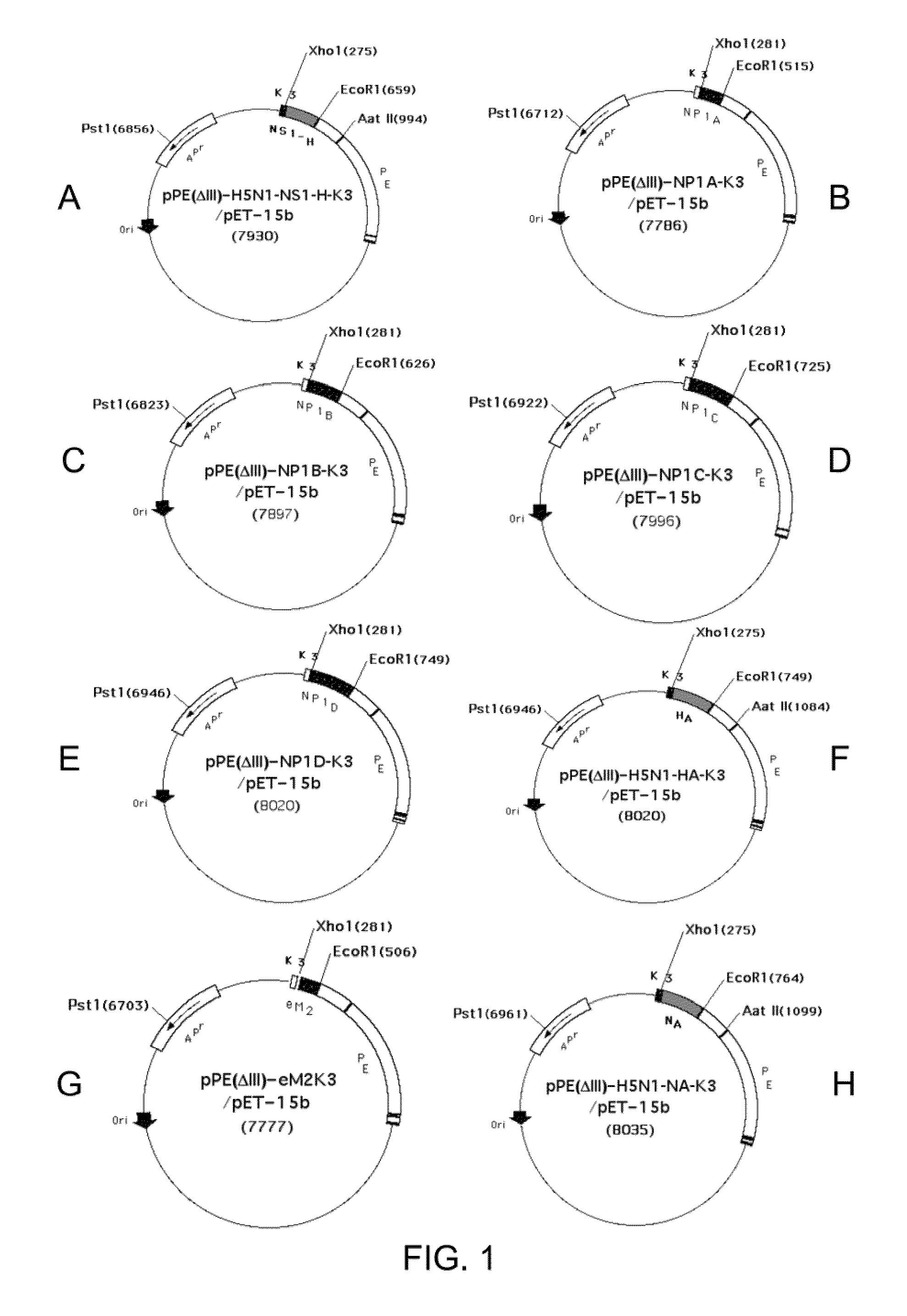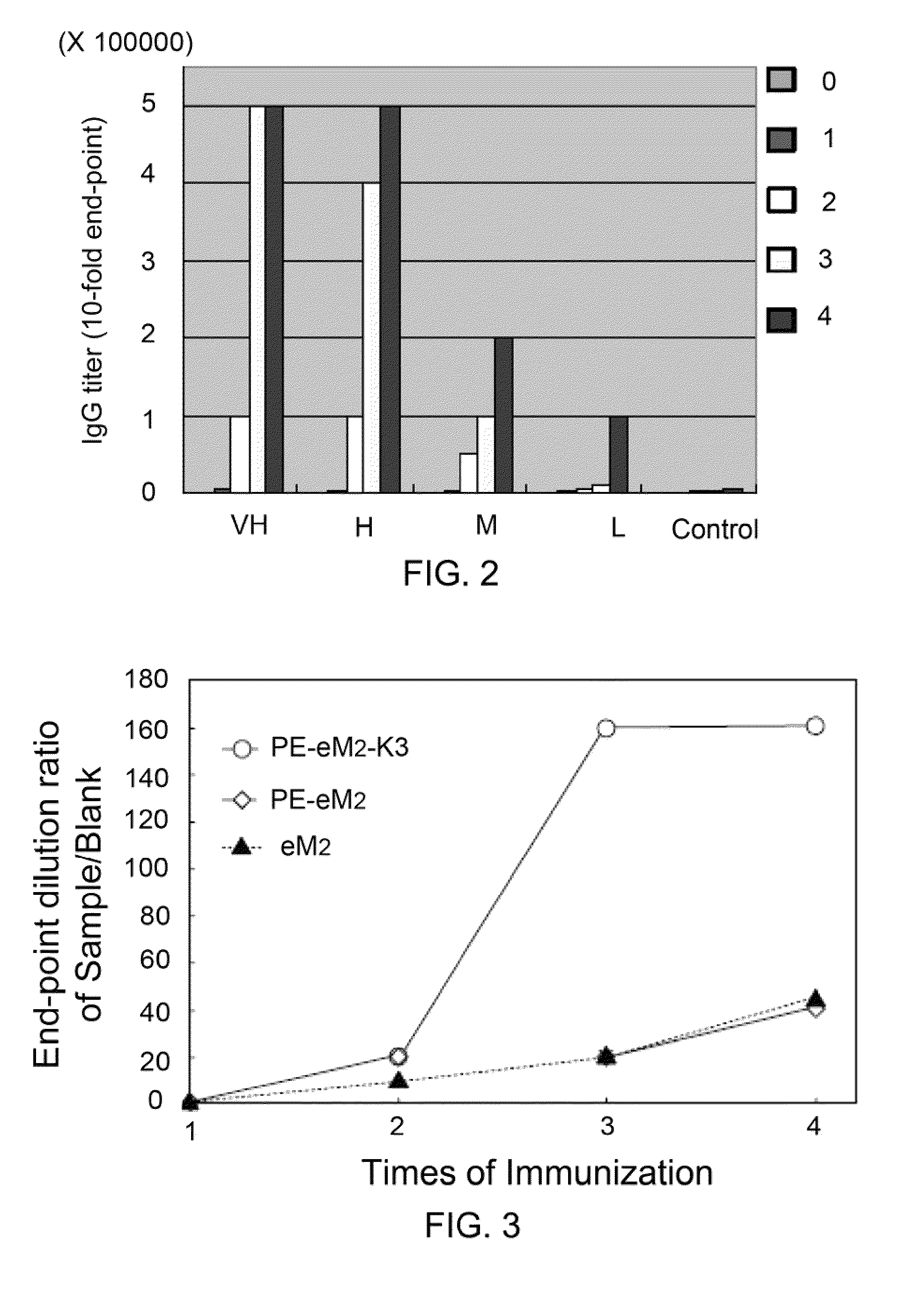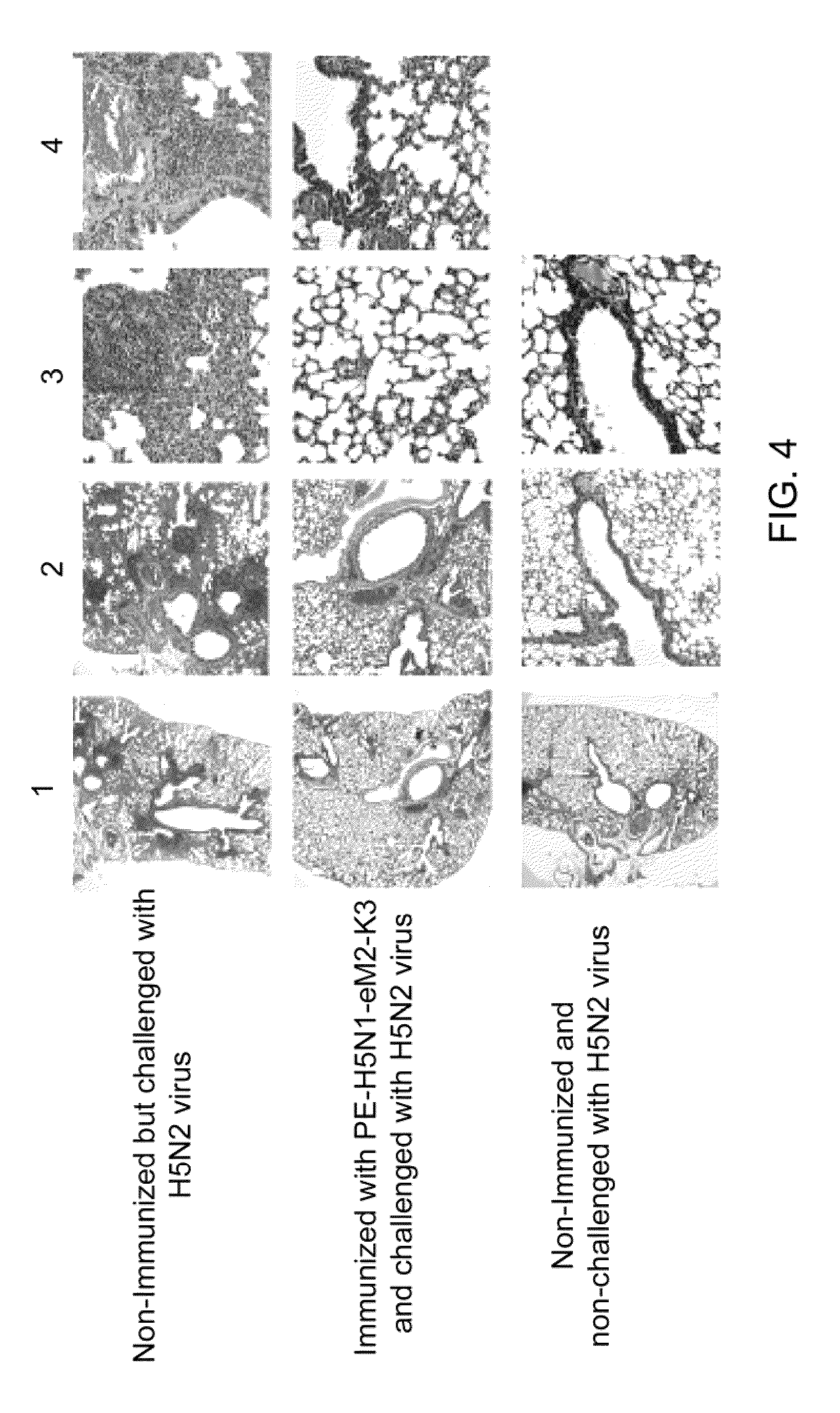Fusion antigen used as vaccine and method of making them
a technology of fusion antigen and vaccine, which is applied in the field of fusion antigen, can solve the problems of slowing down the development process of vaccines, tedious attenuation of viruses, and haphazardness, and researchers involved in manipulating pathogens are also at risk of infection
- Summary
- Abstract
- Description
- Claims
- Application Information
AI Technical Summary
Problems solved by technology
Method used
Image
Examples
example 1
Antibody Titer Test
[0061]To demonstrate that immunization with recombinant vaccines results in serum antibodies, fusion antigen PE-H5N1-eM2-K3 was used as an example. Three doses were used for immunization: high, 0.3±0.03 mg; median, 0.03±0.003 mg; and low, 0.01±0.0001 mg. The different amounts of antigen were mixed with A206 adjuvant and immunized three groups of twelve Balc / C mice. Each mouse received 3 to 4 immunizations at two-week intervals.
[0062]Blood samples were taken and the serum assayed in an ELISA for the titer of Anti-M2 specific antibodies using serial ten-fold dilutions. Anti-M2 specific IgG antibody titer was detected after the second round of immunization. M2 anti-specific IgG, an antibody titer was detected after the second round of immunization. The very high dose (VH) (0.1±0.01 mg) and high-dose injections (H) (0.3±0.03 mg) induced similar titers after the third round immunization and reached a plateau after the fourth round. The low dose of injection induced a l...
example 2
Vaccinal Immunization Tests of Egg-laying Leghorn Chickens
[0063]Taking PE-H5N1-eM2-K3 as an example, 0.1±0.01 mg of the fusion antigen was mixed with appropriate adjuvant, and administered to a Leghorn chicken at egg-laying stage. As shown in FIG. 3, after three to four immunizations with PE-H5N1-eM2-K3, high-titers of anti-avian influenza antibodies accumulated in the yolks using a serial dilution ELISA assay. When PE-H5N1-eM2 or eM2 subunit proteins were used in vaccines, the IgY titers were very low, about 10-40 times the non-immunized control group.
example 3
Immunization of ICR Mice with H5N1 Target Fusion Protein Vaccines and Virus Challenge Tests
[0064]In this example, the fusion proteins expressed were the conserved common immunogens of the H5N1 type influenza virus. According to the general knowledge of the art, H1N1 shares characteristics in common with any N1-type virus, such as H5N1. Hence, vaccines comprising the fusion proteins which are conserved common immunogens of the H5N1 type influenza virus can protect a host against both of H1N1 type and H5N2 type viruses. Because H5N1 type influenza virus is extremely pathogenic in humans, the containment requirements make it unsuitable for experimentation. Demonstration that a fusion protein vaccine containing common immunogens of the H5N1 type influenza can protect a host against both H1N1 and H5N2 type viruses should however be an adequate approach for a person having the ordinary skills of the art.
Challenge with H1N1 Type Human Influenza Virus
[0065]The individual fusion proteins wer...
PUM
| Property | Measurement | Unit |
|---|---|---|
| volume | aaaaa | aaaaa |
| antibody titers | aaaaa | aaaaa |
| length | aaaaa | aaaaa |
Abstract
Description
Claims
Application Information
 Login to View More
Login to View More - R&D
- Intellectual Property
- Life Sciences
- Materials
- Tech Scout
- Unparalleled Data Quality
- Higher Quality Content
- 60% Fewer Hallucinations
Browse by: Latest US Patents, China's latest patents, Technical Efficacy Thesaurus, Application Domain, Technology Topic, Popular Technical Reports.
© 2025 PatSnap. All rights reserved.Legal|Privacy policy|Modern Slavery Act Transparency Statement|Sitemap|About US| Contact US: help@patsnap.com



